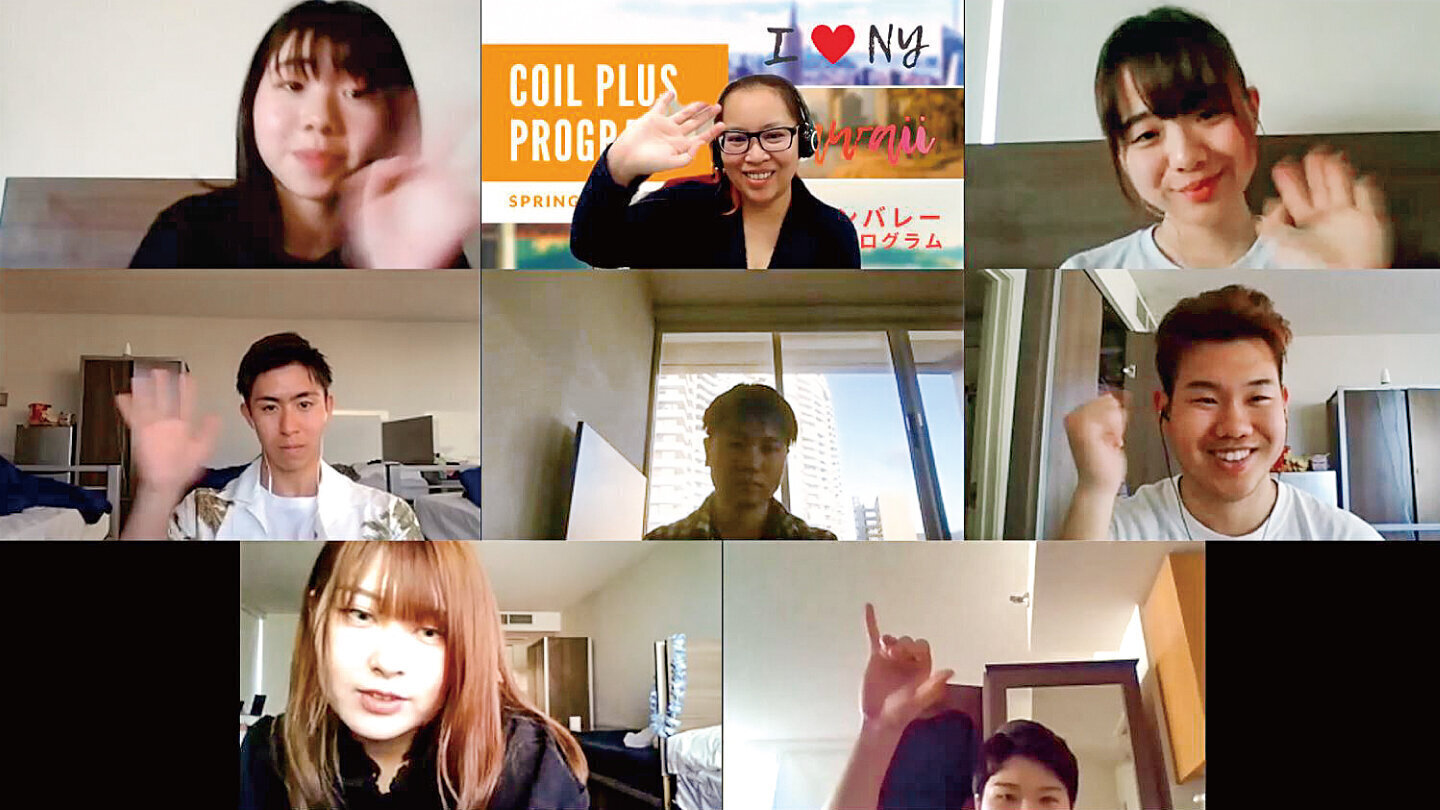KANDAI
HEADLINES

- GLOBAL
- STUDY
Vitalizing cross-border international education with collaborative online international learning (COIL) Acquiring a global human resource perspective by using ICT tools
Keiko Ikeda, Professor of the Division of International Affairs
The idea of learning along with overseas university students while in Japan sounds like a dream, but Collaborative Online International Learning (COIL) makes it possible. As a result of implementing COIL-style education ahead of other Japanese universities, Kansai University currently has a network with over 30 universities in 12 countries. But what kinds of results have our students achieved after taking advantage of various ICT tools during their studies? Professor Keiko Ikeda, the Vice Director of the Institute for Innovative Global Education (IIGE) of the Division of International Affairs, talked to us about it.
COIL, a widely recognized collaborative international learning method
COIL stands for Collaborative Online International Learning. COIL is an active learning method of using Skype, Zoom, Facebook, and other ICT tools to enable students at overseas universities to cooperate virtually as they work on projects in various fields. Ever since COIL was started by the State University of New York in 2004, more and more universities have been incorporating the method into their classes around the world. In 2014, Kansai University introduced COIL ahead of other Japanese universities.

As of 2014, around 80% of people in their twenties have and use smartphones. Students of this generation have Skype, Facebook, and other IDs, and they are familiar with ICT tools. There was something novel about the utilization of social media, which was usually used only for fun, as a learning tool, so classes that incorporated COIL were extremely popular with students. COIL is also educationally effective and expected to see further development, so we decided to make COIL a pillar of our approach to international education. We are gradually expanding our network and currently implement projects in connection with around 20 to 25 courses per year.

* The online COIL platform jointly developed by Kansai University and Class2Class, Inc. (a US-based startup)
The ability to collaborate with people of many nationalities is essential for next-generation society.
For example, the objective of foreign language courses and studying foreign languages abroad is to increase the ability to use a foreign language. Meanwhile, the objective of COIL is to use a foreign language as a tool to collaboratively learn with students around the world. Through this learning format―which involves tackling a given issue as a team―students can deepen their mutual understanding and improve their interpersonal skills.
In the global society of the near future, it won't be unusual for people of multiple nationalities to work together in virtual offices. I suppose COIL offers a simulated experience of such a next-generation society. The most appealing thing about COIL is that it can be used to develop the skills and mindset that will soon be required.
Naturally, one result of COIL is improved English and oral communication ability in particular. When students take the OPI (Oral Proficiency Interview), a test of English speaking ability, after involvement in COIL activities, their rating increases by one level in most cases. Even the kinds of students who are in tears after classes due to their lack of English ability sometimes end up studying abroad after a few years. COIL boasts these and similar examples.
Reassessing the value of online classes due to the COVID-19 crisis
The COVID-19 pandemic is a tragedy and certainly nothing to be welcomed at all. However, as a result of this crisis, online university classes have become more common, and COIL-style education is attracting more and more attention around the world. COIL is often used as an alternative to the conventional approach of studying abroad, but COIL can be used in other ways as well. Compared to studying abroad, the psychological hurdles associated with COIL aren't as difficult to overcome, and it doesn't cost that much. COIL enables students to achieve contact with multiple countries at once, and students can even interact with students in regions where the social situation is not stable. COIL's online format makes many things possible, and the approach offers advantages that differ from those of studying abroad.
In 2018, Kansai University received support as part of the Ministry of Education, Culture, Sports, Science and Technology's Inter-University Exchange Project, and we currently act as a platform for promoting the spread of COIL-style education throughout the country. Therefore, I believe that one of our roles is to help establish and develop COIL to ensure that it is more than just a passing fad.

An example of COIL: cross-border team collaboration to tackle issues
I would like to introduce a specific example of a COIL project that was implemented in summer of this year. The program's theme was the SDGs*, and the program was intended for students of University Mobility in Asia and the Pacific (UMAP)* member schools. The program's admission capacity was initially assumed to be 30 to 50 students, but―due to the huge number of applications―around 140 students from countries around the world ended up participating in the program online. Many of those students were prevented from studying abroad due to the impact of COVID-19. Their enthusiasm was the real deal. It was really reassuring to see that so many students are so eager to learn in spite of the current global challenges.

The program consisted of five 90-minute lectures, and students were asked to work on an assignment in small groups at the same time. The assignment was to spend two weeks organizing SDG-related case studies covering various countries and then present the results. Therefore, the students had to hold discussions outside of class time as well. They used ICT tools to frequently communicate, assigned roles as necessary, and prepared their presentations. The participating students came from various countries, including the UK, China, the USA, Mexico, Chile, and Thailand. Although there was occasionally some friction due to cultural background and time zone differences, the students overcame such difficulties to collaborate. I think that process is the best part about COIL and resulted in a major learning opportunity for the students.

* What is University Mobility in Asia and the Pacific (UMAP)?
University Mobility in Asia and the Pacific is an association that was established to promote interaction between the students and staff of institutions of higher education in the Asia-Pacific region. The association's abbreviation is UMAP. As of 2019, 36 countries and regions were members of UMAP, including the USA, China, Russia, and various countries in Southeast Asia.
* What are the SDGs?
The SDGs are Sustainable Development Goals that are shared by the international community. They were adopted at a UN summit in September of 2015, and they consist of 17 goals, which are organized into 169 specific targets intended to help achieve them.
The entire world is the stage for student activity.
I want all our students to constantly be aware of the fact that the world is the stage for their activity. The students are studying at a Japanese university right now, but that doesn't mean that they have to limit their future career options to opportunities within Japan. I think the standard approach should actually be to seek places of employment around the world. Even in cases where students work in Japan, I believe the era of being able to get away with communicating only with Japanese people is coming to an end. In the near future, people will need to act as global citizens. We will continue to support students in their efforts to achieve such a perspective while enrolled, through COIL-style education and other IIGE policies.


- Keiko Ikeda, Professor (Division of International Affairs)
- Professor Ikeda is the Vice Director of the Institute for Innovative Global Education. She earned a Ph.D. from the University of Hawaii (where she majored in Japanese language and culture). Her fields of specialization include international education, Japanese/foreign language education, conversation analysis, and communication studies. She also conducts practical research on the mobility of people both domestically and abroad (including immigration, emigration, and cross-cultural interaction contexts) as well as the internationalization of universities.
Related articles
- TOP
- About Kansai University
- Public Relations
- List of Headlines
- Headline Article










